The Rubik's Cube is a globally renowned 3D puzzle that challenges minds and dexterity. Invented by Ernő Rubik, this iconic cube consists of six faces adorned with colorful stickers, which players twist and turn to mix up the colors. The objective is to restore the cube to its original configuration, with each face showing a single color. Solving the Rubik's Cube requires logic, spatial awareness, and problem-solving skills, making it a beloved pastime and brain-teasing challenge for enthusiasts of all age
WinQuest Online is providing live interactive online classes on Rubik’s cube for affordable prices. We have highly qualified tutors and provide convenient time slots, with both 1:1 and group classes. With our interactive teaching method, the classes feel very natural. This unique mix of traditional & modern teaching styles is what makes us one of a kind!
A 2x2 cube, often referred to as the "2x2 Rubik's Cube," "Pocket Cube," or "Mini Cube," is a smaller and simpler version of the classic 3x3 Rubik's Cube puzzle. It is a three-dimensional mechanical puzzle that consists of smaller cubes, also known as "cubies," arranged in a 2x2x2 configuration. Unlike the 3x3 cube, which has 6 faces and 54 stickers, the 2x2 cube has only 4 faces and 24 stickers.
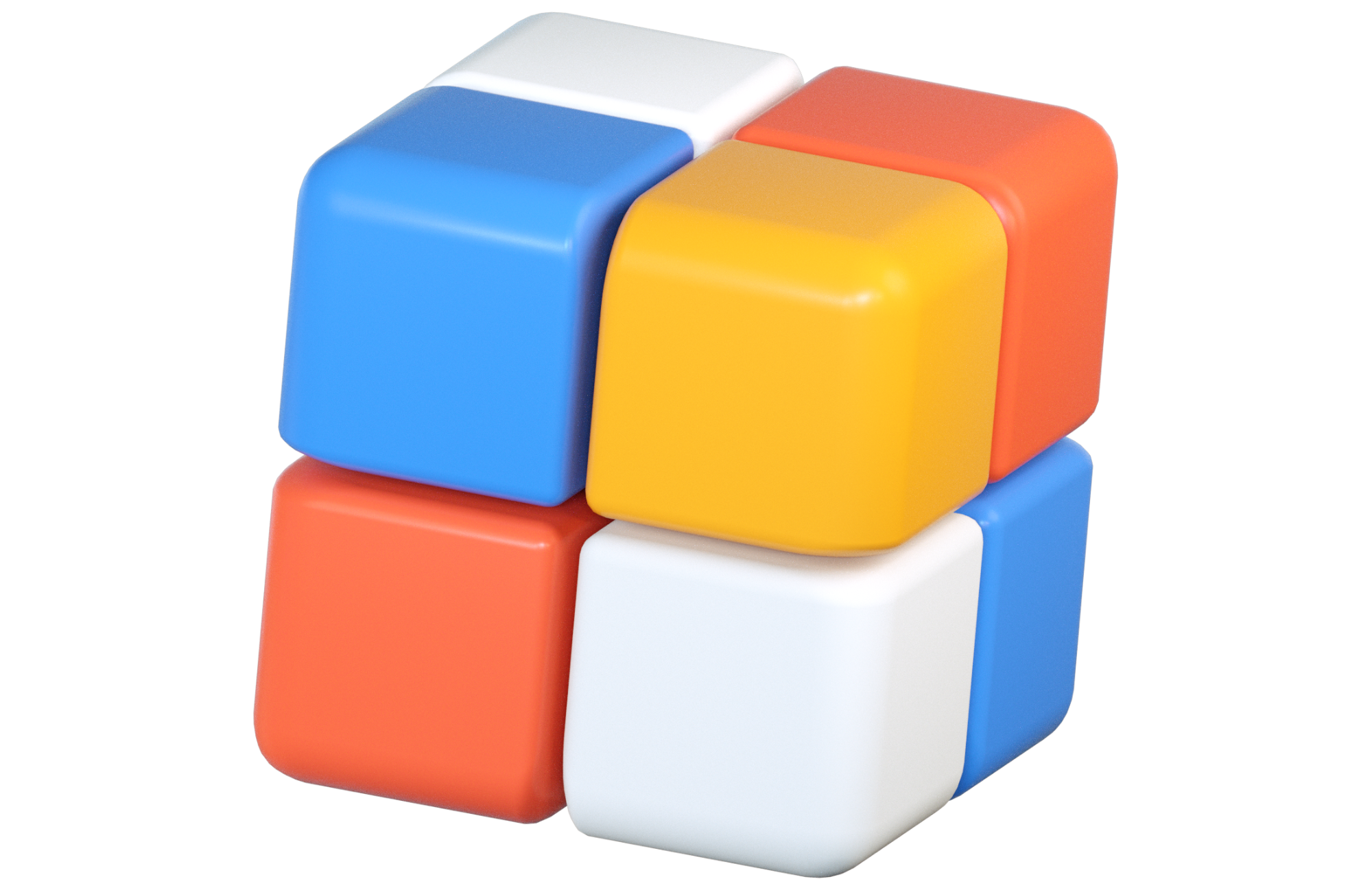
Age group: 6+
Duration: 5 sessions
| Units | Description |
|---|---|
| Lesson 1: Introduction | - Introduce the 2x2 Rubik's Cube and its basic mechanics. - Explain the goal: to have all sides of the cube with the same color. - Show them the different sides and colors of the cube. |
| Lesson 2: Solving the First Layer | - Teach kids how to solve the first layer (one color) intuitively. - Start with the white face since it's the easiest to recognize. - Show them how to make a white cross on the white face. |
| Lesson 3: Completing the First Layer | - Continue from Lesson 2 to teach them how to complete the first layer. - Explain how to align the corners correctly. - Ensure they understand the process through hands-on practice. |
| Lesson 4: Solving the Opposite Layer | - Introduce solving the opposite layer (the layer below the solved layer). - Teach them how to intuitively match the colors and solve it layer by layer. |
| Lesson 5: Review and Speed | - Review the entire solving process with the kids. - Encourage them to practice regularly and try to improve their solving time. - Provide tips on improving their speed, like finger tricks and efficient moves. |
A 3x3 cube, commonly known as the "3x3 Rubik's Cube" or simply the "Rubik's Cube," is the standard three-dimensional mechanical puzzle. It consists of a cube with six faces, each made up of nine smaller squares called "cubies." The puzzle is characterized by its colorful stickers on each face, which can be of various colors but traditionally include white, yellow, blue, green, red, and orange.
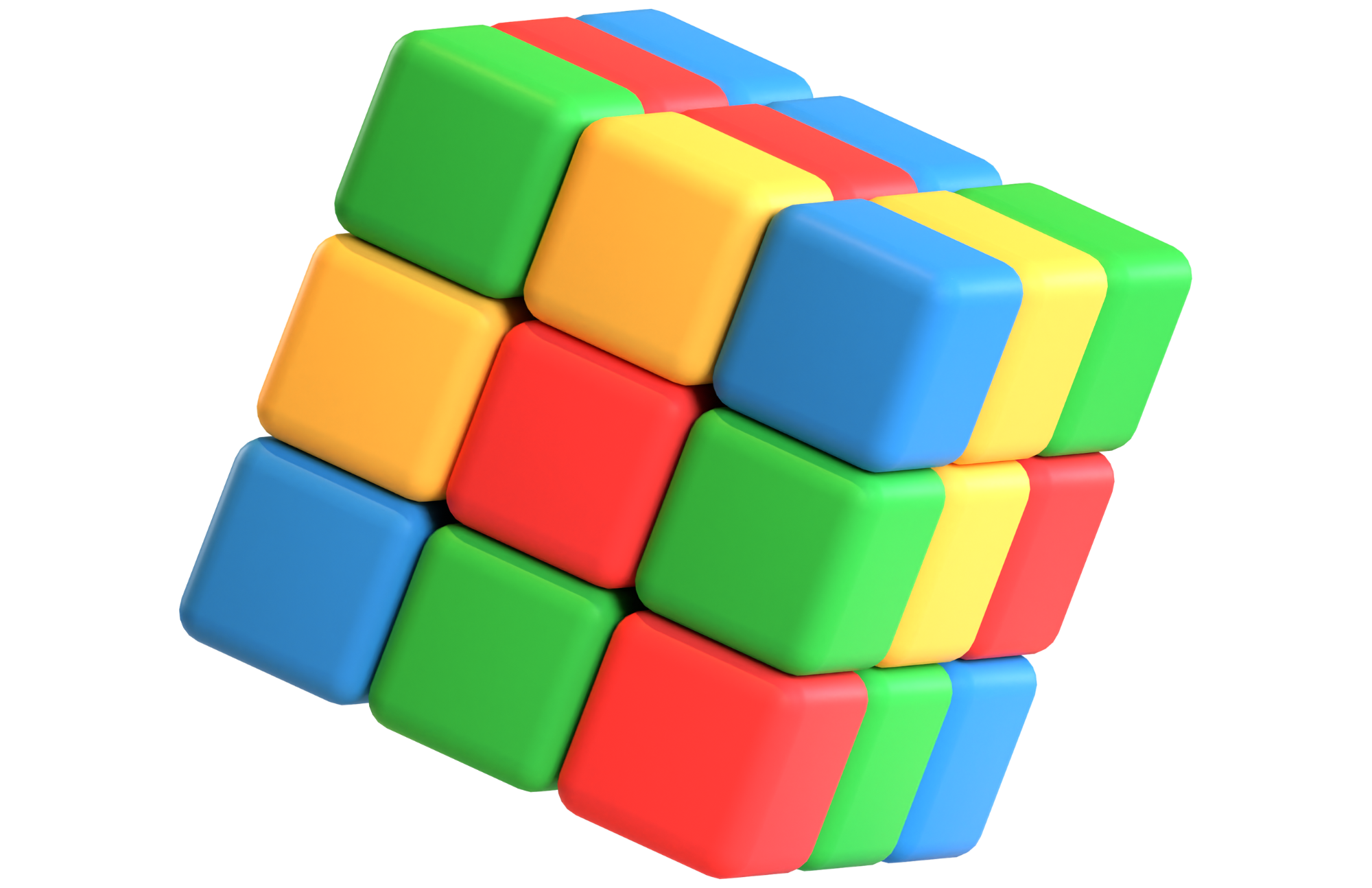
Age group: 7+
Duration: 7 sessions
| Units | Description |
|---|---|
| Lesson 1: Cube Familiarization | - Introduction to the 3x3 Rubik's Cube - Understanding the cube's structure and colors - Basic cube terminology |
| Lesson 2: Solving the First Layer | - Solving the first layer cross - Completing the first layer corners - Basic cube terminology |
| Lesson 3: Second Layer | - Understanding and solving the second layer |
| Lesson 4: Solving the Third Layer Edges | - Solving the third layer edges - Introduction to the concept of algorithms |
| Lesson 5: Third Layer Corners | - Solving the third layer corners - Introduction to more advanced algorithms |
A 4x4 cube, often referred to as the "4x4 Rubik's Cube" or "Rubik's Revenge," is a larger and more complex mechanical puzzle than the traditional 3x3 Rubik's Cube. Like the 3x3 cube, it consists of a cube-shaped structure made up of smaller cubies, but it is larger and has more features. The 4x4 cube has four layers on each axis, meaning it has a total of 16 smaller squares on each face, making a total of 96 individual stickers. Unlike the 3x3 cube, the 4x4 cube has a mechanism that allows each of the four center cubies on each face to rotate independently, adding an extra layer of complexity to the puzzle.
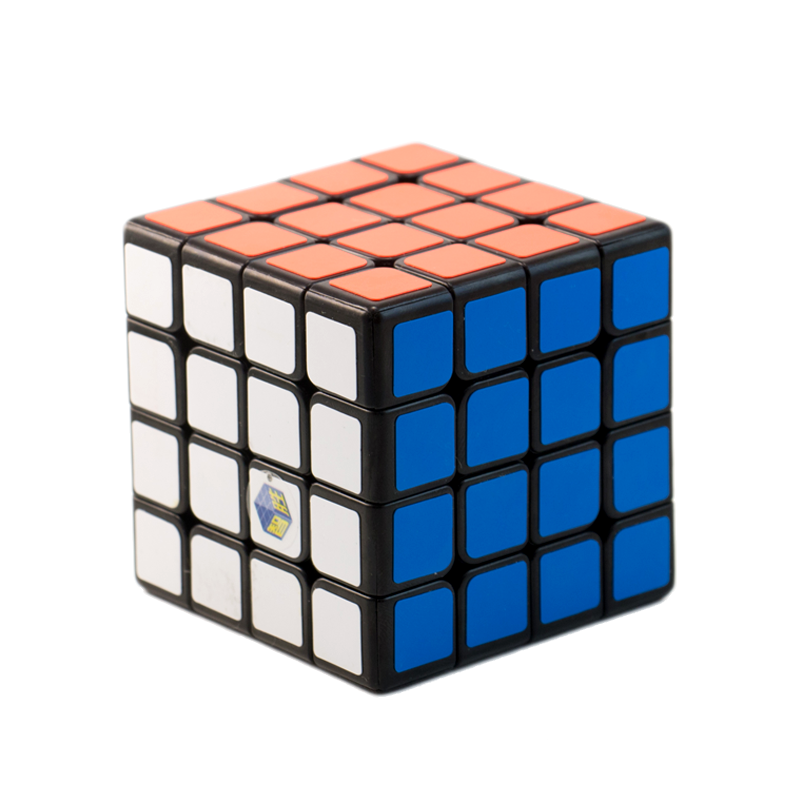
Age group: 7+
Duration: 10 sessions
| Units | Description |
|---|---|
| Lesson 1: Cube Introduction and Notation | - Introduction to the 4x4 Rubik's Cube - Understanding the cube notation - Basic cube terminology |
| Lesson 2: Centers and Edges | - Solving the center and edge pieces of each face - Building the centers of the cube |
| Lesson 3: Pairing Edges | - Pairing up the edges correctly - Introduction to edge pairing algorithms |
| Lesson 4: First Two Layers | - Solving the first two layers using edge pairing - Strategies for solving efficiently |
| Lesson 5: OLL Parity | - Understanding OLL parity and how to fix it - Practice exercises |
| Lesson 6: PLL Parity | - Introduction to PLL parity - Solving PLL parity cases |
| Lesson 7: Last Layer | - Solving the final layer using advanced techniques - Introduction to 4x4 cube-specific algorithms |
3x3 speed cubing refers to the competitive sport of solving the standard 3x3 Rubik's Cube as quickly as possible.
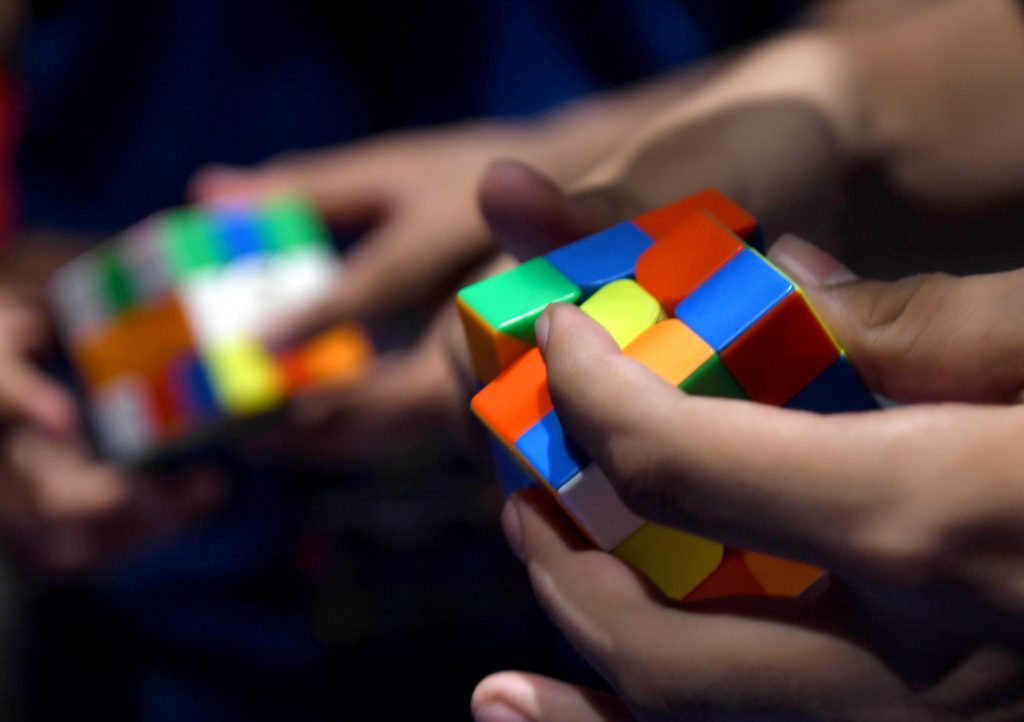
Age group: 7+
Duration: 10 sessions
| Units | Description |
|---|---|
| Lesson 1: Introduction to Speed Cubing | - Discuss the basics of speed cubing. - Introduction to the standard Rubik's Cube notation. - Learn the importance of finger techniques and efficient moves. |
| Lesson 2: Cross and F2L (First 2 Layers) | - Review solving the cross on the white face. - Introduction to F2L technique for the first two layers. - Practice solving the cross and F2L pairs efficiently. |
| Lesson 3: Advanced F2L | - Explore more advanced F2L techniques. - Learn to recognize and solve F2L pairs without rotating the cube. - Practice F2L algorithms for speed. |
| Lesson 4: 2-Look OLL (Orientation of Last Layer) | - Introduce 2-Look OLL method for the last layer. - Practice recognizing and orienting the last layer pieces. |
| Lesson 5: 2-Look PLL (Permutation of Last Layer) | - Introduce 2-Look PLL method for the last layer. - Practice recognizing and permuting the last layer pieces. |
| Lesson 6: Full CFOP (Cross, F2L, OLL, PLL) | - Combine all the CFOP components into a single solve. - Work on improving efficiency and lookahead during solves. |
| Lesson 7: Advanced Techniques | - Explore advanced techniques such as lookahead, finger tricks, and efficient turning. - Practice executing algorithms quickly and accurately. |
| Lesson 8: Timing and Inspection | - Introduce the concept of inspection time. - Learn how to plan the first few moves during inspection. - Practice solving with a timer and record solving times. |
| Lesson 9: Solve Optimization | - Analyze solves and identify areas for improvement. - Practice solving while minimizing pauses and optimizing move sequences. |
| Lesson 10: Mock Competition | - Simulate a speed cubing competition setting. - Perform timed solves and review the results. - Discuss strategies for competing in actual speed cubing events. |
A Pyraminx is a pyramid-shaped puzzle similar to the Rubik's Cube but with a different structure and solving mechanism. It was invented by Uwe Mèffert in 1971 and has become a popular twisty puzzle. The Pyraminx consists of four triangular faces, each divided into nine smaller triangular stickers, for a total of 36 stickers. Unlike the Rubik's Cube, the Pyraminx has no center or core piece.
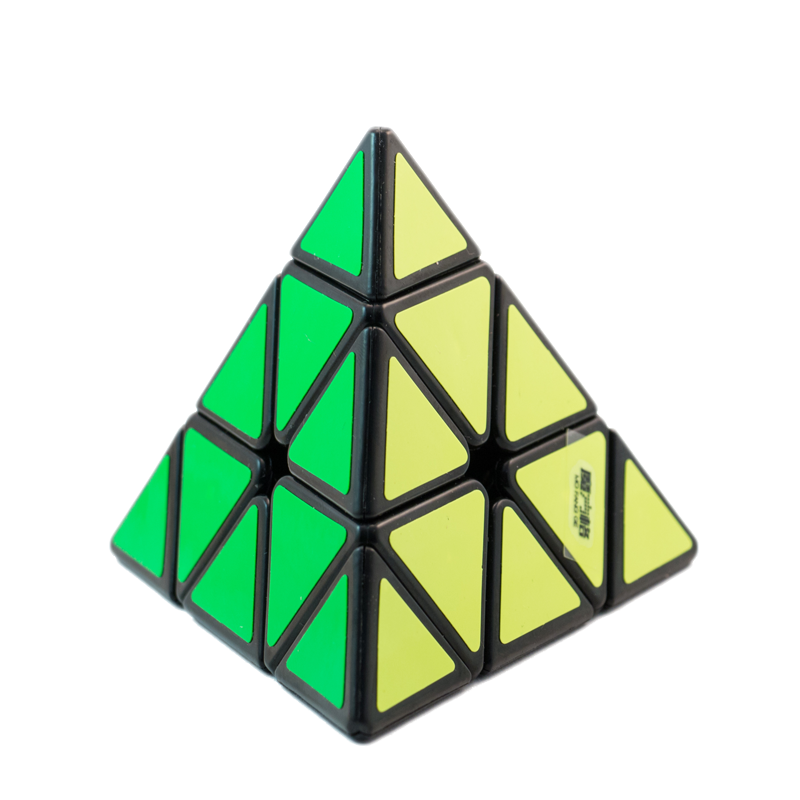
Age group: 7+
Duration: 10 sessions
| Units | Description |
|---|---|
| Level 1: Introduction to the Pyramid Cube (Pyraminx) | Cube Familiarization - Introduction to the Pyraminx, its unique features, and solving concepts. - Learn the notation specific to the Pyraminx. - Practice basic moves and handling of the cube. Solving the Tips - Understand the importance of solving the tips (1st layer) first. - Learn strategies to solve the tip pieces. |
| Level 2: Solving the Second Layer (2nd Layer) | Pairing Edge Pieces - Learn how to pair edge pieces correctly in the 2nd layer. - Practice solving the 2nd layer while maintaining a solved 1st layer. |
| Level 3: Solving the Third Layer | Solving the Final Layer - Develop techniques to solve the final layer efficiently. - Learn algorithms for solving the final layer one piece at a time. |
A Mirror Cube, also known as a Mirror Blocks or Mirror Twisty Puzzle, is a variation of the classic Rubik's Cube. What sets the Mirror Cube apart is its unique and irregular shape. Unlike the standard Rubik's Cube, which has uniformly sized cubies on each face, the Mirror Cube features cubies of various sizes and shapes. This creates a distorted and eye-catching appearance
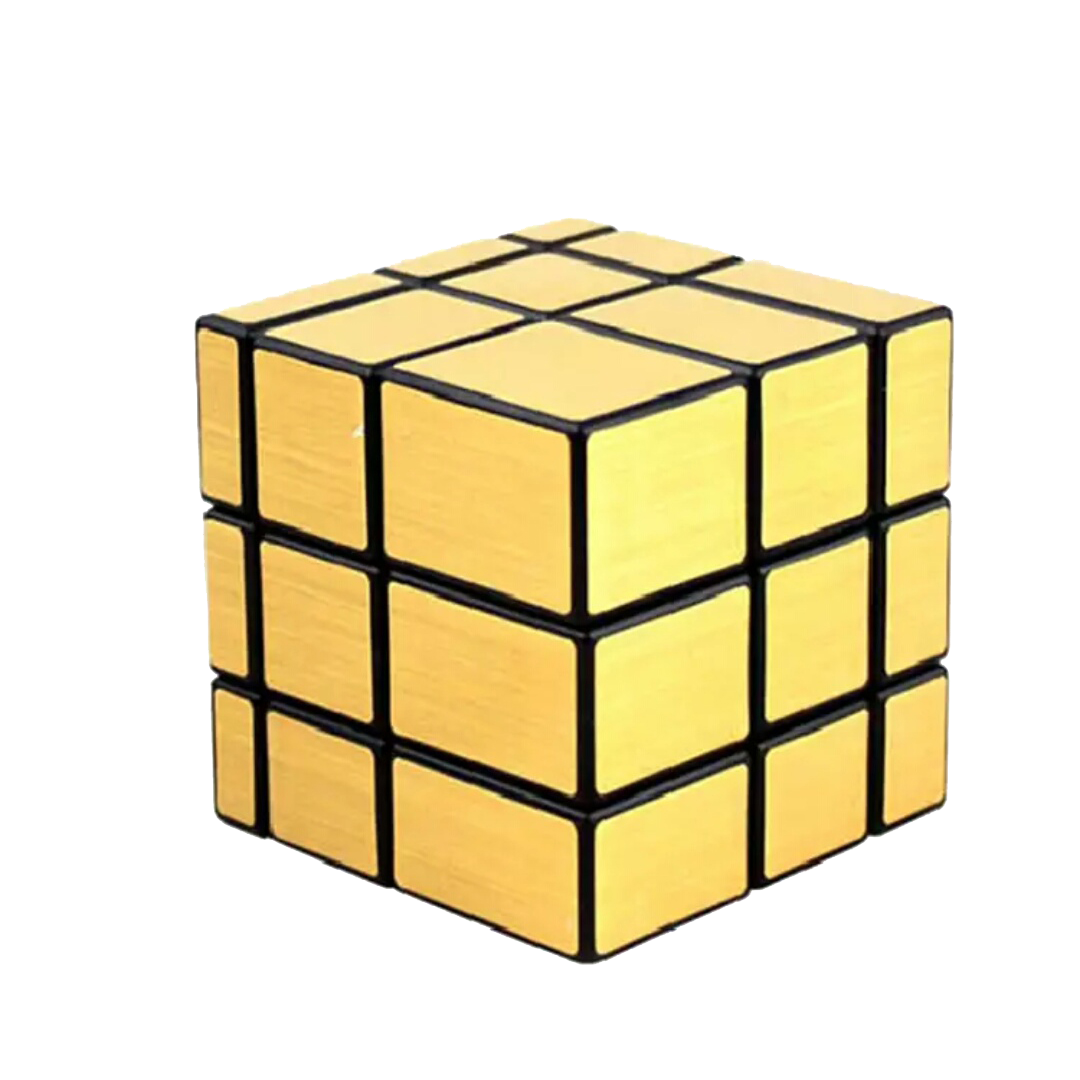
Age group: 7+
Duration: 10 sessions
| Units | Description |
|---|---|
| Level 1: Introduction to the Mirror Cube | Cube Familiarization - Introduction to the Mirror Cube, its unique features, and solving concepts. - Learn the notation specific to the Mirror Cube. - Practice basic moves and handling of the cube. Solving One Face - Understand the importance of solving one face first. - Learn strategies to solve the face's center and edge pieces. |
| Level 2: Solving Adjacent Faces | Solving Adjacent Faces - Develop techniques to solve adjacent faces efficiently. - Learn algorithms for solving the center and edge pieces of adjacent faces. |
| Level 3: Solving Opposite Faces | Solving Opposite Faces - Explore methods to solve opposite faces while maintaining solved adjacent faces. - Learn algorithms for solving center and edge pieces of opposite faces. |

Live Interactive Classes
Individualized tutoring
Convenient & flexible scheduling
No contracts or hidden fees
Free demo class and worshops
For kids aged 6 years and above
Highly qualified tutors
Different types of cubes covered
Speed cubing and advanced cubes also available
Have a Question?
Any questions about how our live instructor-led online classes work?
Want to speak to someone to schedule a class?
Our Profile Video
To get started, you can simply book a demo class or join one of our free workshops. To book a demo class you can click on the “Book a Demo” button and provide the necessary information. For further details, please contact Seema at (+91) 74391 54909 or [email protected]
We require monthly advance payments for the number of classes scheduled in a calendar month. We use Paypal or other payment apps for collection of fees. You would be asked to select your choice of payment method during the initial setup of the class.
For batch classes, we would be able to share a timed recording upon parent's request. For one-on-one sessions, the class would be rescheduled. We request the parents to inform prior in advance in such cases.
All our engagements are based on the terms and conditions and other requirements mentioned in the website. We provide complete flexibility to our students to exit the course anytime if they do not find the classes beneficial to them.
For progress tracking we will be providing assessments and homework lessons which will give parents a clear picture of a child's progress. We encourage all parents to discuss and share their views/feedback on a regular basis to the teacher or our institute representative for updates and for us to keep improving and meeting your expectations.
We provide complete flexibility to our students to exit the course anytime, if they do not find the classes beneficial to them. We will refund fees for those future classes which are not taken by the Student.
What makes Rubik's Cubes captivating is their intricate design and the challenge they pose. The vibrant colors and interlocking mechanism draw the eye, while the complexity of solving keeps the mind engaged. The sense of accomplishment when aligning the colors and completing the puzzle provides a satisfying feeling. The endless possibilities of combinations and the pursuit of finding the solution stimulate curiosity and determination. This captivating nature makes Rubik's Cubes both a visual delight and a mental workout, appealing to individuals of all ages.
Yes, we provide certificates after completion of the course. We also encourage students to participate in various competitions which are Internationally recognized.
We are providing classes in the USA, Canada, UK, South Africa, Australia, Dubai, Singapore etc. We schedule sessions accordingly to the time comfortable to kids in the respective time Zones
WinQuest provides one to one interactive sessions with highly qualified teachers and best-in-class learning experience for your kids within your home. We endeavor to provide quality education at a reasonable cost, so that Kids can get individual attention and therefore are able to compete better
Kids should learn to solve Rubik's Cubes because it offers a range of cognitive, motor, and personal development benefits. Solving a Rubik's Cube enhances critical thinking and problem-solving skills as they decipher patterns and strategize solutions. It cultivates patience and persistence, teaching them the value of working through challenges. Manipulating the cube improves spatial awareness, fine motor skills, and hand-eye coordination. Additionally, solving the cube introduces algorithmic thinking and boosts self-confidence. It sharpens focus, concentration, and mental agility while providing a sense of achievement. Learning to solve Rubik's Cubes combines fun with education, making it an ideal activity for enhancing various skills in an engaging manner.
There isn't a specific age to start solving Rubik's Cubes, as it largely depends on the child's individual development and interest. Generally, kids as young as 7 years old can begin learning the basics, especially if they show an inclination towards puzzles and challenges. However, older kids and teenagers can also enjoy and benefit from solving Rubik's Cubes. The key is to introduce it when the child is curious and open to learning, as it involves critical thinking and spatial reasoning skills that continue to develop with practice.
Absolutely! Solving Rubik's Cubes offers academic benefits for kids. As they engage with these puzzles, they naturally develop cognitive skills like critical thinking, spatial awareness, and pattern recognition. These skills extend to algorithmic thinking and fine motor control, benefiting subjects such as mathematics, science, and even programming. The focus and persistence cultivated while solving the cube enhance concentration and problem-solving abilities. Successfully completing the cube boosts confidence and encourages a positive attitude towards academic challenges. Overall, Rubik's Cube solving fosters a range of skills that can contribute to improved academic performance and a well-rounded educational experience.
No, the course is designed to accommodate complete beginners.
Classes are conducted online via Google Meet or Zoom on the scheduled time, whether the classes be 1:1 or in a group.
Yes, the time slot of the classes will be scheduled to accommodate your child.
Yes, the pace of the classes will be adjusted according to the child.
Yes, an adult can sign up for our courses but, they have to opt for 1:1 sessions.
Our teachers and operations team will provide technical support in case any issue occurs.